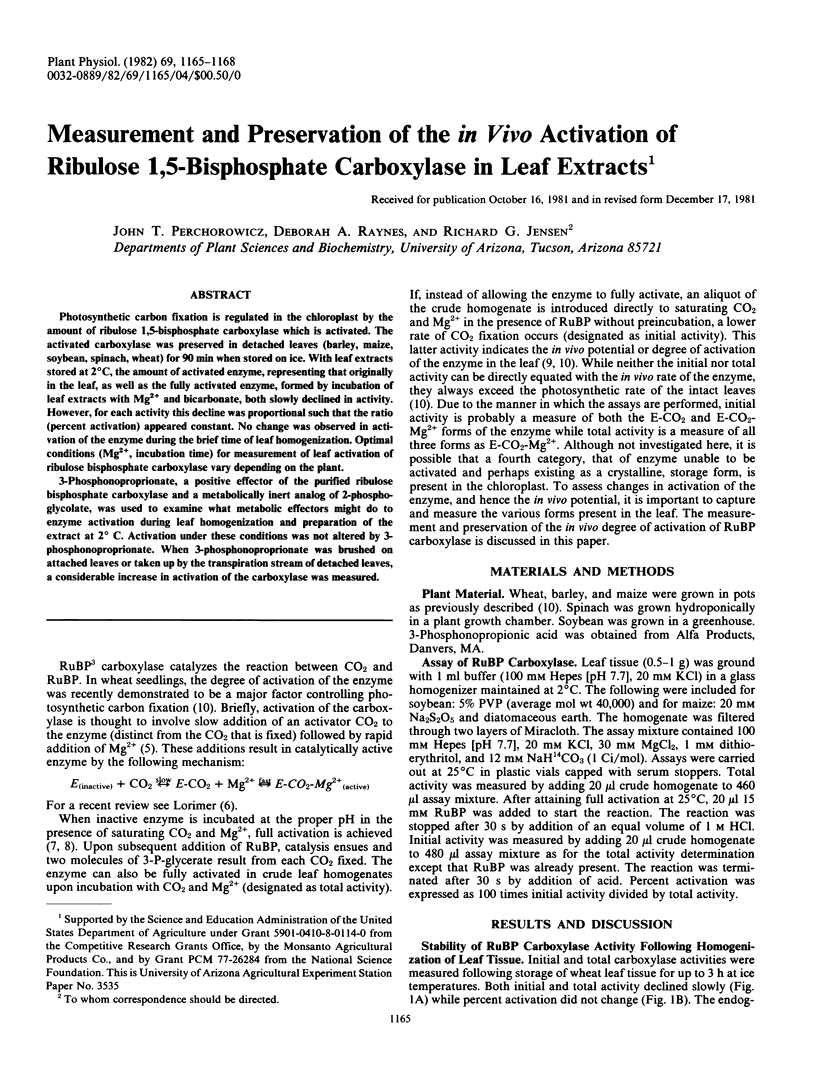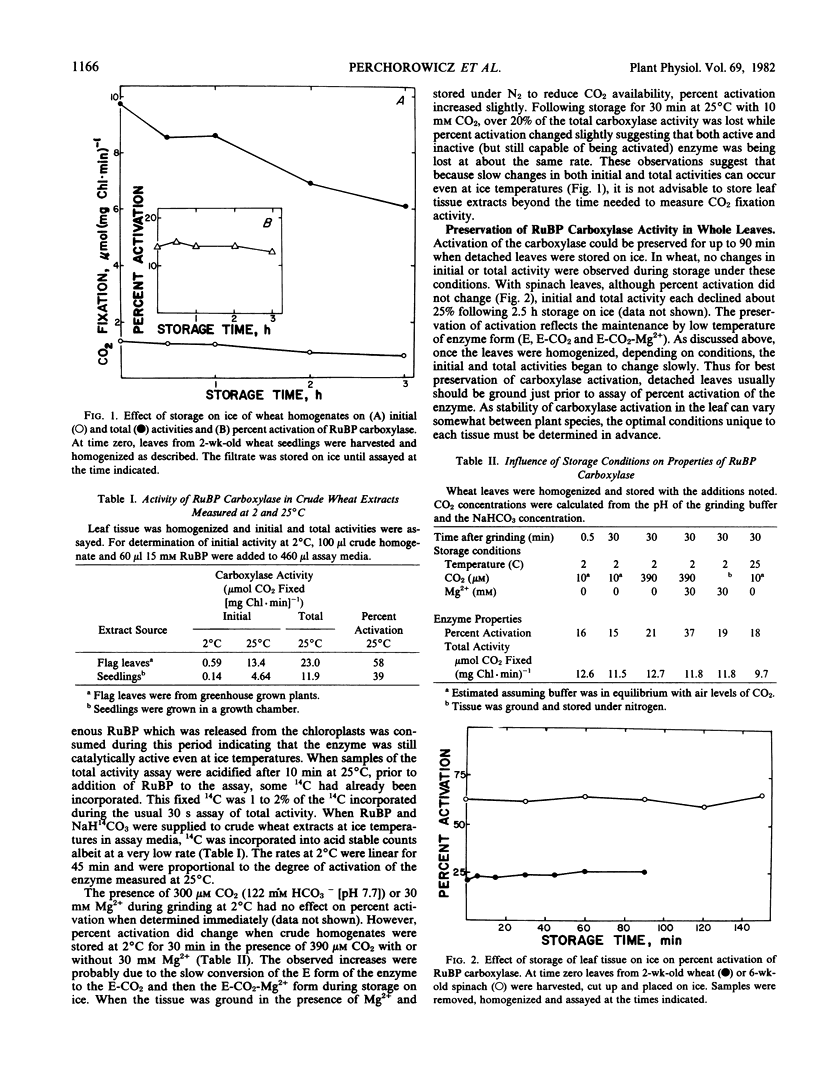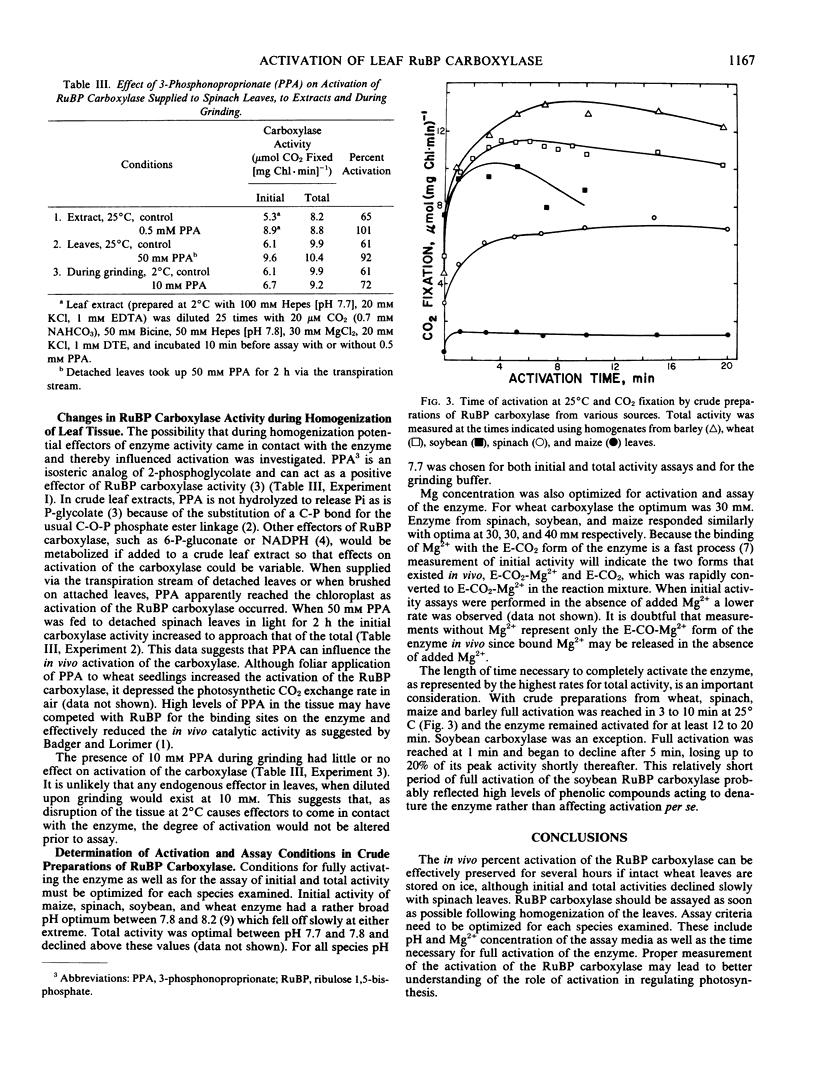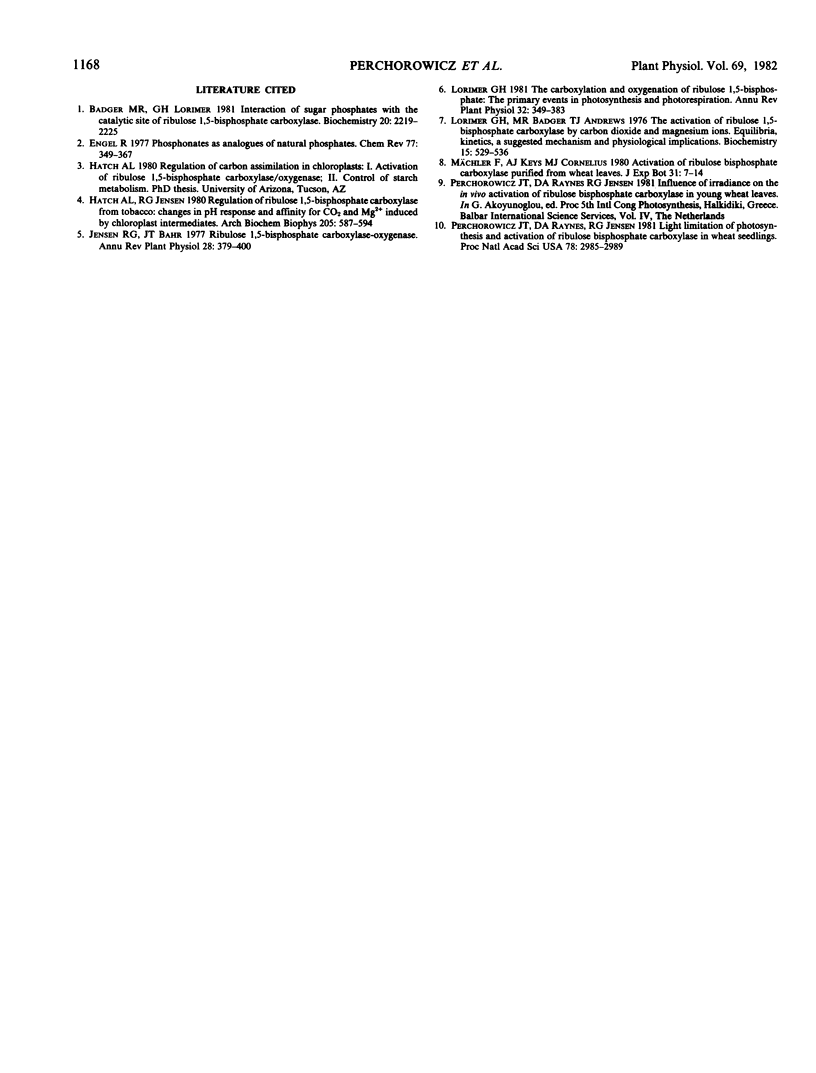Abstract
Photosynthetic carbon fixation is regulated in the chloroplast by the amount of ribulose 1,5-bisphosphate carboxylase which is activated. The activated carboxylase was preserved in detached leaves (barley, maize, soybean, spinach, wheat) for 90 min when stored on ice. With leaf extracts stored at 2°C, the amount of activated enzyme, representing that originally in the leaf, as well as the fully activated enzyme, formed by incubation of leaf extracts with Mg2+ and bicarbonate, both slowly declined in activity. However, for each activity this decline was proportional such that the ratio (percent activation) appeared constant. No change was observed in activation of the enzyme during the brief time of leaf homogenization. Optimal conditions (Mg2+, incubation time) for measurement of leaf activation of ribulose bisphosphate carboxylase vary depending on the plant.
3-Phosphonoproprionate, a positive effector of the purified ribulose bisphosphate carboxylase and a metabolically inert analog of 2-phosphoglycolate, was used to examine what metabolic effectors might do to enzyme activation during leaf homogenization and preparation of the extract at 2° C. Activation under these conditions was not altered by 3-phosphonoproprionate. When 3-phosphonoproprionate was brushed on attached leaves or taken up by the transpiration stream of detached leaves, a considerable increase in activation of the carboxylase was measured.
Full text
PDF



Selected References
These references are in PubMed. This may not be the complete list of references from this article.
- Badger M. R., Lorimer G. H. Interaction of sugar phosphates with the catalytic site of ribulose-1,5-bisphosphate carboxylase. Biochemistry. 1981 Apr 14;20(8):2219–2225. doi: 10.1021/bi00511a023. [DOI] [PubMed] [Google Scholar]
- Hatch A. L., Jensen R. G. Regulation of ribulose-1,5-bisphosphate carboxylase from tobacco: changes in pH response and affinity for CO2 and Mg2+ induced by chloroplast intermediates. Arch Biochem Biophys. 1980 Dec;205(2):587–594. doi: 10.1016/0003-9861(80)90142-3. [DOI] [PubMed] [Google Scholar]
- Lorimer G. H., Badger M. R., Andrews T. J. The activation of ribulose-1,5-bisphosphate carboxylase by carbon dioxide and magnesium ions. Equilibria, kinetics, a suggested mechanism, and physiological implications. Biochemistry. 1976 Feb 10;15(3):529–536. doi: 10.1021/bi00648a012. [DOI] [PubMed] [Google Scholar]
- Perchorowicz J. T., Raynes D. A., Jensen R. G. Light limitation of photosynthesis and activation of ribulose bisphosphate carboxylase in wheat seedlings. Proc Natl Acad Sci U S A. 1981 May;78(5):2985–2989. doi: 10.1073/pnas.78.5.2985. [DOI] [PMC free article] [PubMed] [Google Scholar]


